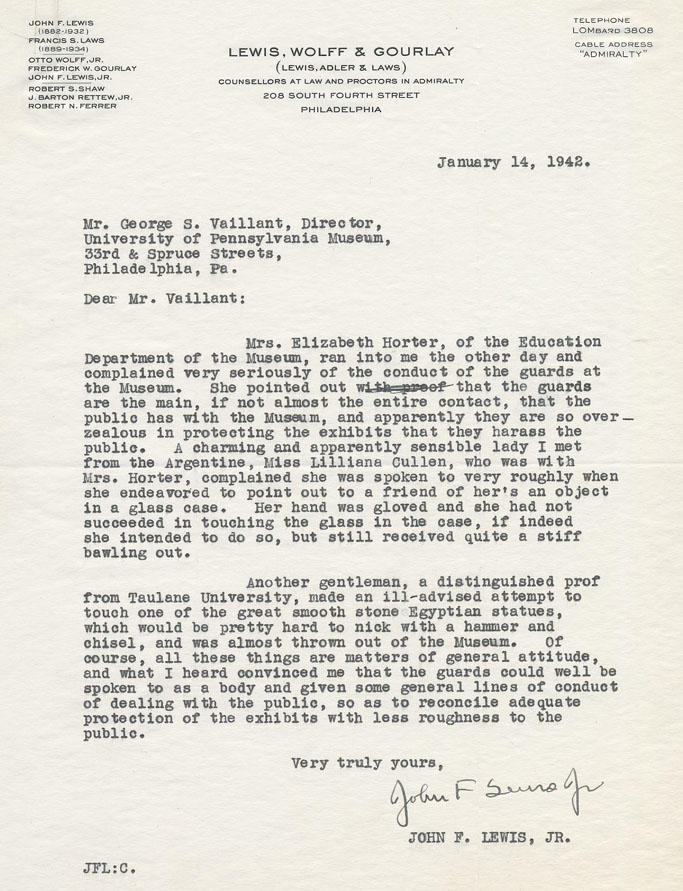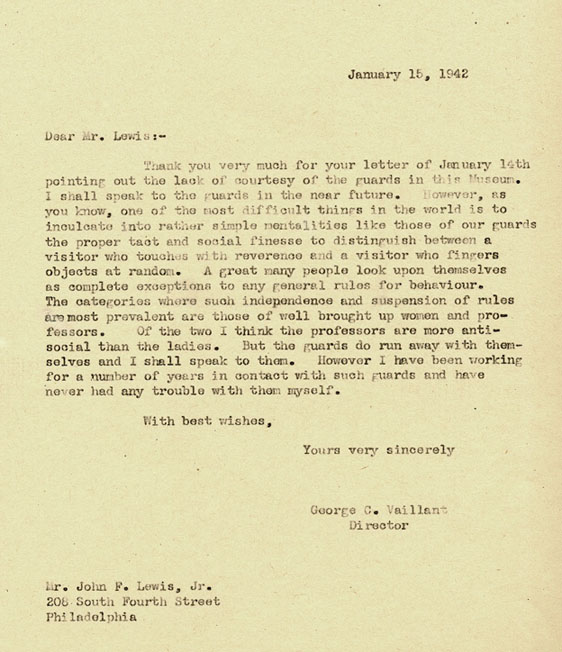It is an eternal conundrum of museums to balance the contradictory values of preservation and access. On the one hand, museums must protect these countless pieces of the world forever, but on the other, they’re not allowed to do it the best way, which is to put everything underground in a salt mine beneath a mountain.

No, the reason we preserve this stuff is so that people are given a chance to see it, even ten generations from now. So they can look, but can they touch? Unlike libraries (which even allow you to take their merchandise home) or archives, museums do not generally allow this.
But enough jabber, because after consulting our ancient files, I discovered the following correspondence which will lay the argument to rest. A graduate of Harvard and an expert on the Aztecs, George Clapp Vaillant was director of the University of Pennsylvania Museum from 1941 to 1945, when he died of an apparent suicide. His fine words in answer to a complaint from a longtime board member will make you realize that self-entitlement is not a modern disease.


